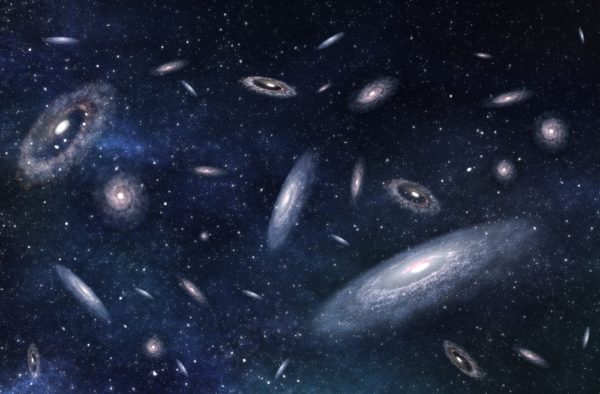Gigantic deserts of almost complete nothingness that make up most of the universe may be causing the expansion of the universe to speed up, new research suggests. That means these vast tracts of nothingness could explain dark energy, the mysterious force that seems to be flinging the universe apart.
Welcome to the desert
Zoom all the way out from the solar system and the Milky Way galaxy, and an interesting pattern emerges: the cosmic web, the largest pattern found in nature. At these scales, where entire galaxies appear as little dots of lights, astronomers observe long, thin ropes of galaxies called filaments, dense clumps called clusters, and between them all vast regions of almost total emptiness. These barren regions are the great cosmic voids, the smallest of which are 20 million light-years across, while the largest can be more than 160 million light-years across.
Like the gaps in a spider web, the voids make up the vast majority of the volume of the universe, despite hosting almost none of the matter. Indeed, aside from the cosmic web itself, which stretches from one end of the observable universe to the other, the cosmic voids are the single largest things in the cosmos.
“Writer Fuel” is a series of cool real-world stories that might inspire your little writer heart. Check out our Writer Fuel page on the LimFic blog for more inspiration.


